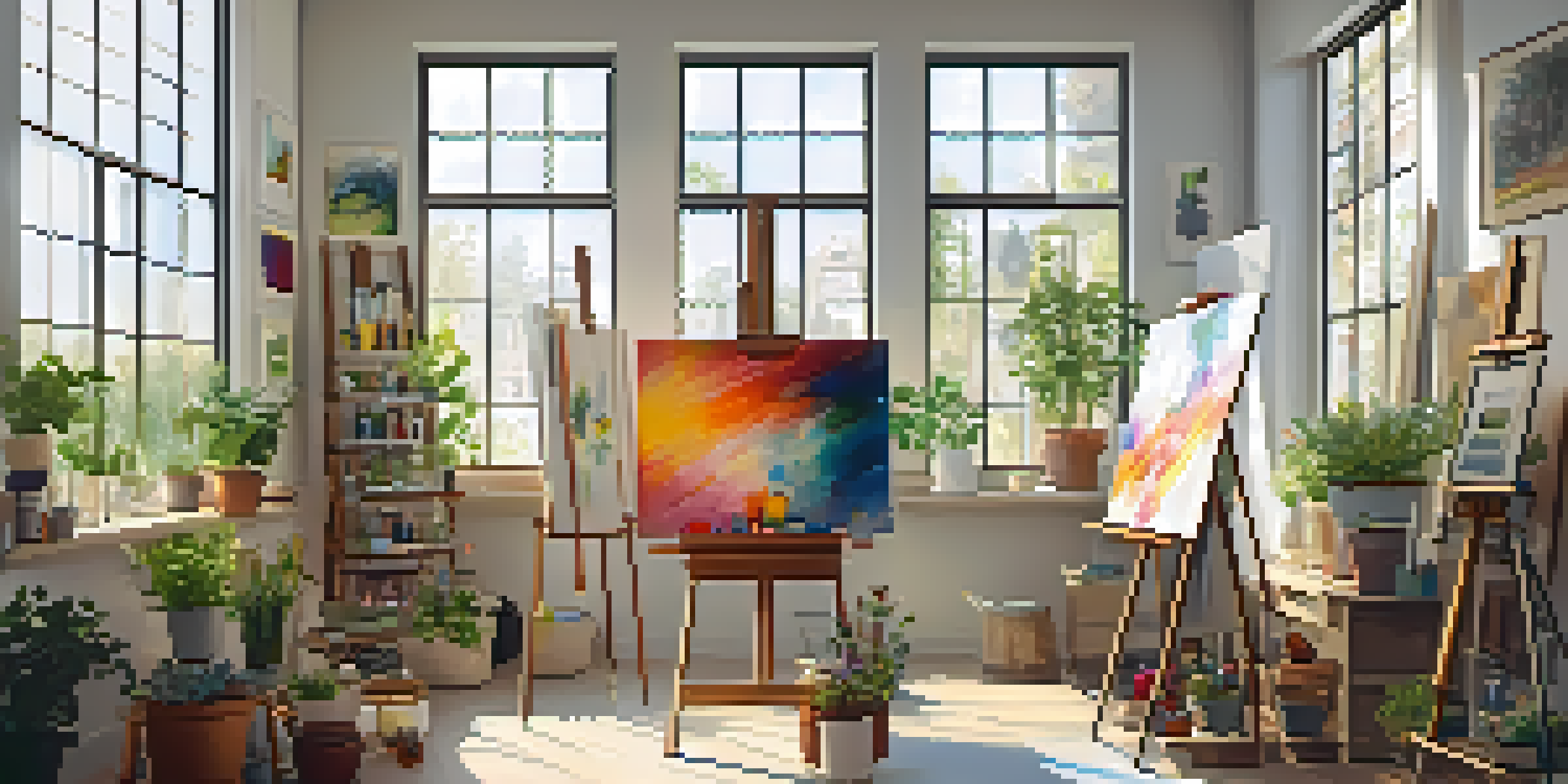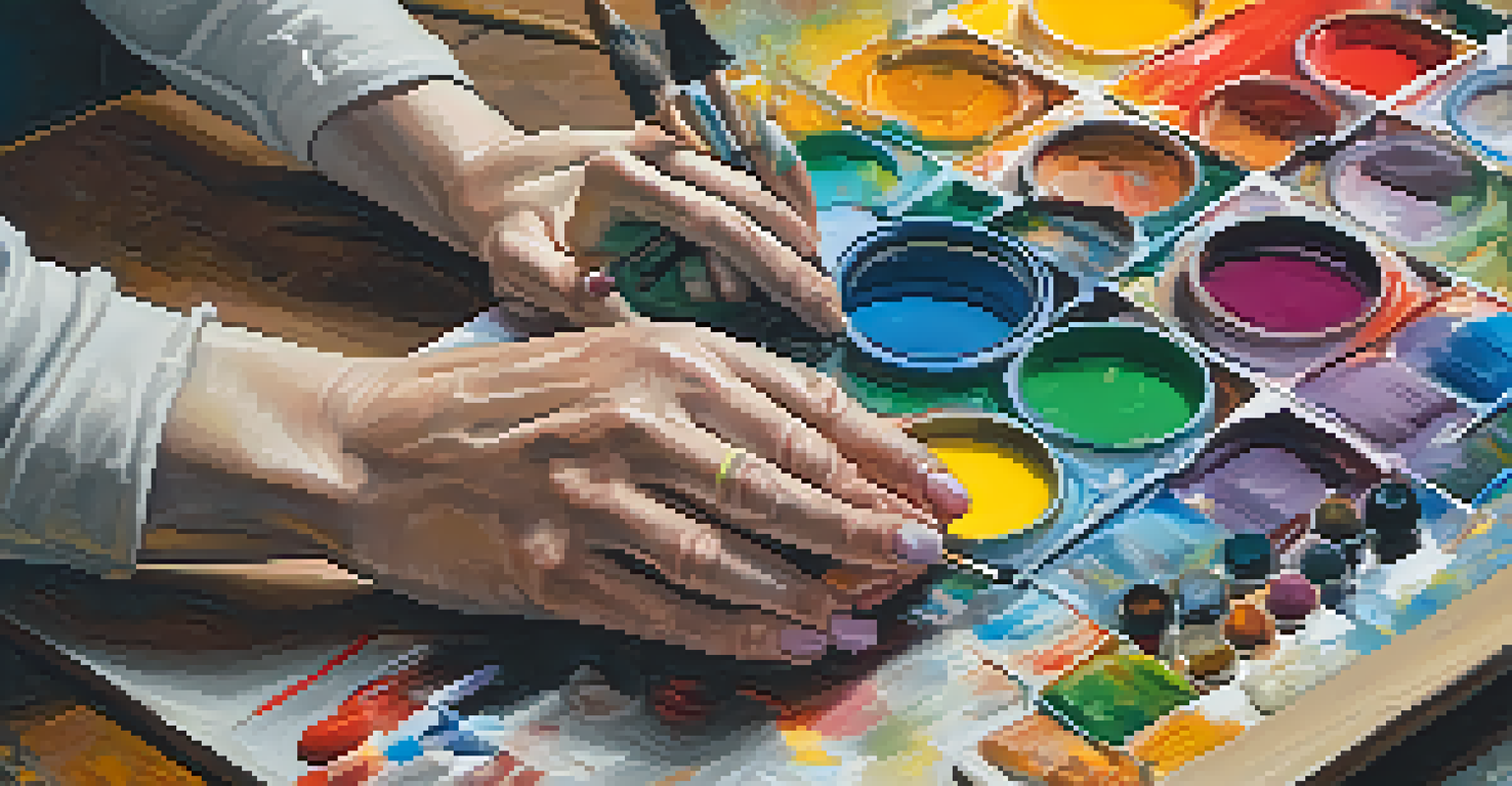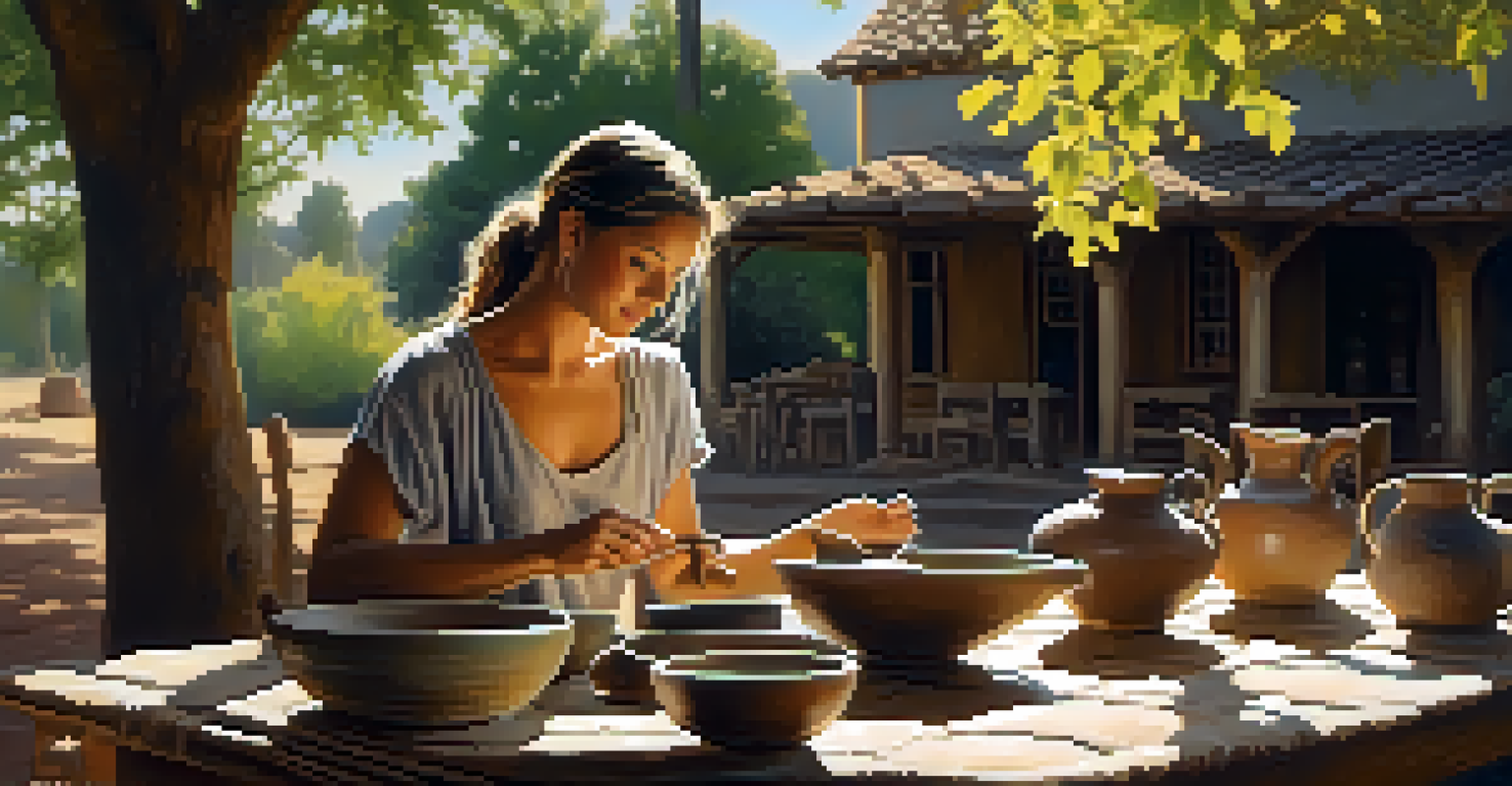The Therapeutic Power of Art: Emotional Release Through Creation

Art as a Medium for Emotional Expression
Art is a unique language that transcends words, allowing individuals to express feelings that might be difficult to articulate. Through painting, drawing, or sculpting, people can channel their emotions onto a canvas or medium, creating a visual representation of their inner turmoil. This expression can be liberating and often leads to a profound sense of relief.
Every artist dips his brush in his own soul, and paints his own nature into his pictures.
For many, art becomes a safe space where they can explore their feelings without judgment. Whether it’s through bold strokes of paint or delicate pencil sketches, the act of creation can provide an emotional outlet. This process not only helps individuals to confront their emotions but also encourages self-exploration and personal growth.
Think of it like a pressure valve: when you release the built-up steam of emotions through creative expression, you create space for healing. The beauty of art lies in its ability to capture the complexity of human experiences, making it a vital tool for emotional release.
The Science Behind Art Therapy
Art therapy is a recognized therapeutic approach that utilizes creative processes to improve mental health. Research has shown that engaging in artistic activities can reduce anxiety and stress, allowing individuals to process their emotions more effectively. By focusing on the act of creation, individuals can shift their attention away from distressing thoughts and feelings.

During art therapy sessions, individuals often find themselves immersed in the creative process, which can lead to a state of mindfulness. This state helps to quiet the mind and provides clarity, enabling individuals to confront their emotions head-on. Such therapeutic settings foster personal insights and can lead to breakthroughs in emotional understanding.
Art as Emotional Expression
Art serves as a powerful medium for individuals to express and process complex emotions, offering a liberating and healing outlet.
In essence, art therapy combines the psychological benefits of creativity with the healing power of self-expression. It's like having a conversation with oneself, where colors and shapes become the words that communicate unspoken feelings.
Personal Stories of Transformation Through Art
Many individuals have shared powerful stories of how art has transformed their lives. For instance, one artist discovered painting during a challenging time and found that each brushstroke helped to release pent-up emotions. By creating art, they were able to navigate their grief and ultimately find peace.
Art is the most beautiful of all lies; it is a lie that tells the truth.
These personal narratives highlight the profound impact of art on emotional health. Another example involves a young woman who turned to pottery as a way to cope with anxiety. The tactile nature of clay allowed her to ground herself, making her feelings more manageable through the physical act of shaping and molding.
Such transformations demonstrate that art is not just a hobby; it can be a lifeline. Each story serves as a testament to the healing power of creation, encouraging others to explore their artistic sides as a means of emotional release.
How to Get Started with Art for Emotional Healing
Getting started with art as a therapeutic outlet doesn't require any prior experience or talent. The first step is simply to allow yourself the freedom to create without the pressure of judgment. Grab some supplies—be it crayons, paint, or even a digital app—and just let your imagination flow.
It's helpful to set aside regular time for your artistic endeavors, treating it as a personal ritual. Consider creating a cozy space where you can retreat and express yourself freely. This dedicated time can become a sanctuary for emotional exploration and creativity.
Benefits of Art Therapy
Art therapy combines creativity with psychological healing, helping individuals reduce anxiety and gain emotional clarity.
Remember, the goal isn’t to create a masterpiece; it’s about the process of creation itself. Like writing in a journal, art becomes a form of self-discovery, revealing thoughts and feelings that may have been buried deep within.
The Role of Community in Artistic Expression
Engaging with a community of fellow creators can amplify the therapeutic effects of art. When you share your creations and experiences with others, it fosters a sense of belonging and validation. This connection can be incredibly healing, as it reminds us that we’re not alone in our struggles.
Art classes, workshops, or community art projects provide excellent opportunities to meet like-minded individuals. Sharing the creative process can lead to collaboration, support, and inspiration, creating an environment where emotional release is encouraged and celebrated.
In essence, community adds another layer to the art experience, allowing for shared healing and emotional discovery. It’s a reminder that art is not just a solitary endeavor but can also be a collective journey towards understanding and healing.
Mindfulness and Art: A Powerful Combination
Incorporating mindfulness into your art practice can enhance its therapeutic benefits. Mindfulness encourages you to focus on the present moment, helping to reduce anxiety and increase emotional awareness. When you engage in art with a mindful approach, you create a deeper connection to your feelings and thoughts.
As you create, pay attention to the colors, shapes, and textures, allowing yourself to be fully immersed in the process. This mindfulness practice can transform your art-making experience into a form of meditation, where the act of creation becomes a way to center yourself and release emotional tension.
Community Enhances Healing
Engaging with a community of creators fosters connection and validation, amplifying the therapeutic effects of artistic expression.
By merging mindfulness with art, you cultivate a space for self-reflection and emotional clarity. This combination can lead to a more profound understanding of your feelings, ultimately making the creative process even more rewarding.
Finding Your Artistic Voice for Emotional Release
Discovering your unique artistic voice is an integral part of using art for emotional release. It’s about finding the style, medium, and themes that resonate with you personally. This exploration can be an exciting journey, allowing you to experiment and discover what truly speaks to your heart.
Don’t be afraid to draw inspiration from various sources—nature, music, or even your personal experiences. Allowing your emotions to guide your creative choices can lead to powerful expressions of your inner self. The more authentic your art, the more therapeutic it becomes.

Embracing your artistic voice not only enhances the emotional impact of your work but also fosters self-acceptance. It’s a celebration of who you are and the emotions you carry, making the act of creation a profound form of self-care and healing.